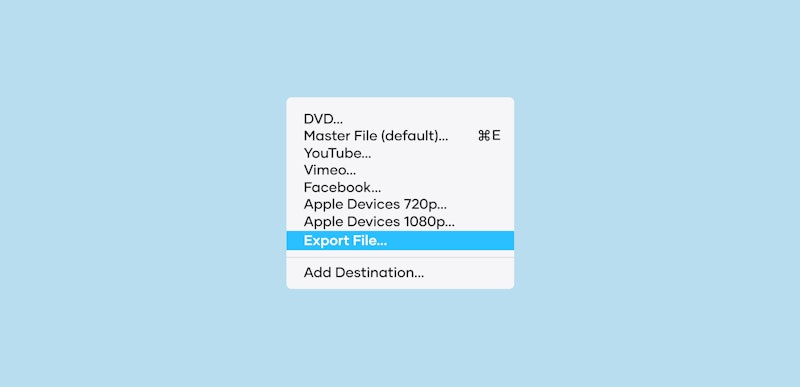In this tutorial, you’ll learn the proper methods of how to export in Final Cut Pro X. Exporting is a simple process of figuring out which resolutions and file sizes will be right for you and your final video. Depending on where you intend to host your video, or how much time you’re looking to spend rendering, there will be a variety of options available.
One familiar issue that editors face fairly often is rendering out a clear video in 1080p, then uploading the video and seeing that the video has had its quality degraded by the video hosting platform. By learning how to export in Final Cut Pro, you’ll be able to avoid this issue and cheating yourself out of high resolutions, clear frame rates, and strong overall visual quality. Let’s dive in!
Summary
Part 1: How to Export in FCPX
Understanding the variety of destinations for your export will help craft the necessary quality for your video.
Step 1: Choose a Project to Export
Before starting your export, select the proper video project.
- Open up your project library view with the shortcut Command + 0.
- Select the project from your library you’d like to export or create a new one by selecting Command + N.
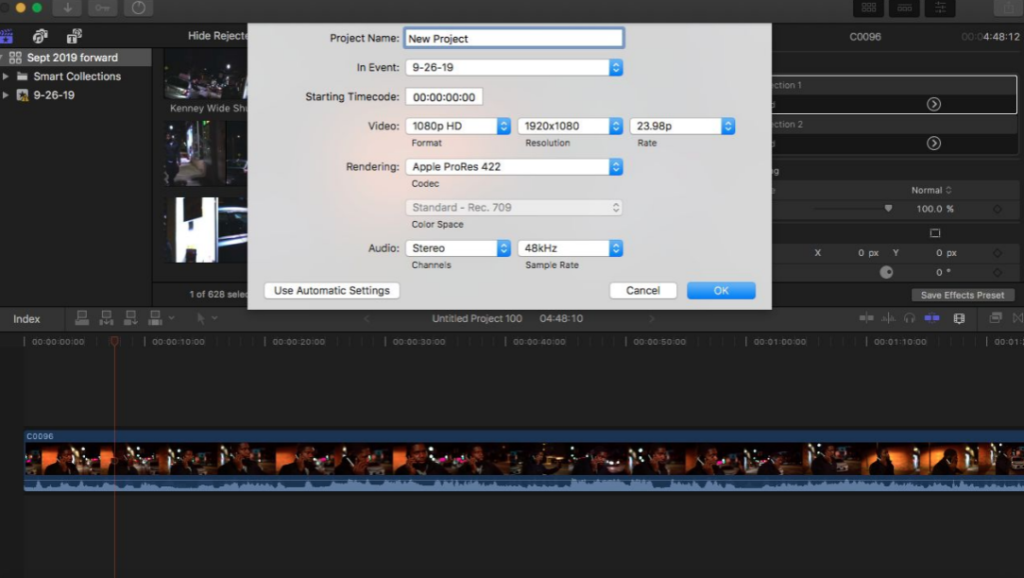
Step 2: Choose the Best Export Settings
- Finalize your timeline and select the File tab.
- From there, select Share or Command + E.
- You’ll likely want to export using the Master File option as your default choice. In case that doesn’t whet your appetite, we have some alternatives below if you’d like to get extra specific or just plain adventurous! You’ll find a variety of options in the explanations and tables ahead.
- By selecting the Master File tab, the Settings panel will appear.
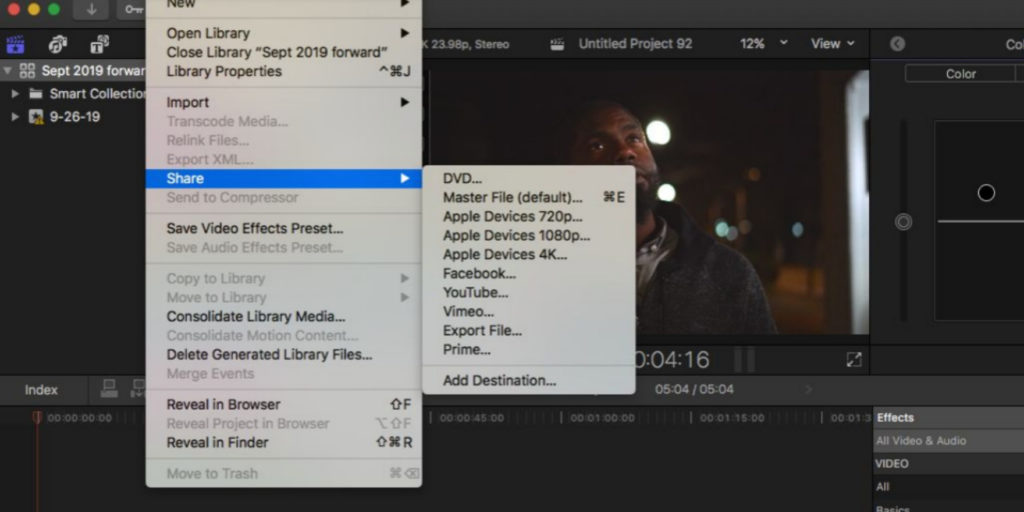
Recommended Resolutions
Depending on the dimensions of your video file and where you intend to upload it, you’ll want to select the resolution that will make it work best. After opening Final Cut Pro, you’ll be able to choose a project resolution that matches your footage.
Here are the standard recommended resolutions for social media and video hosting platforms:
| Format | Recommended Resolution |
| Standard Video | 1920 x 1080 |
| YouTube | 1920 x 1080 [or 4096 x 2304] |
| Vimeo | 1920 x 1080 [or 4096 x 2304] |
| 1920 x 1080 | |
| 1080 x 1080 [or 640 x 640] |
Recommended Codecs

Codecs help tell your machine how to render the video. Their value is one that is frequently underrated and often overlooked. But which codec you decide can make a world of a difference!
Codecs are nearly as important to the exported video file as the resolution. The standard codec for videos to be uploaded online is H.264. H.264 offers a compressed file with minimal loss in playback quality. That’s right, you can enjoy a nice balance of a high-quality video with a smaller file size. Pretty sweet!
However, if your video is hinging on that teensy extra bit of visual clarity, or if the subjects of said-video are lit poorly, the Source – Apple ProRes 422 codec is most recommended.
Step 3: Monitor Your Export Progress
You can monitor your progress easily! By simply clicking Command + 9, you will be able to see how far along the exporting process has moved. Final Cut Pro will give you an exact percentage to see how close to completed your video is.
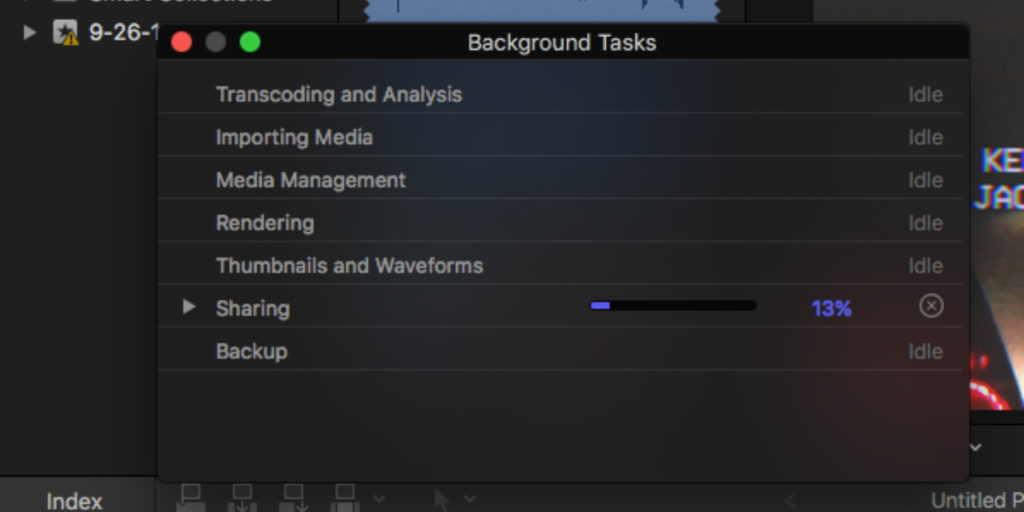
Part 2: Pro Tips & Troubleshooting
1. Exporting a Section of Your Timeline
Sometimes you don’t have the time to render out an entire project and need to preview just a portion of it. Luckily there is a simple solution for that. If there is a specific part of your project you’d like to render out individually, you’ll be able to do that by following these steps.
- Blade the sections of the clip you want to render. Use the shortcut Command + B.
- Highlight the rest of the project and Delete by using the backspace or delete key. (You will be able to restore it after the render).
- Follow the Export settings above to render the individual clip out.
- After the clip has been rendered, use the shortcut Command + Z to restore the deleted project files.
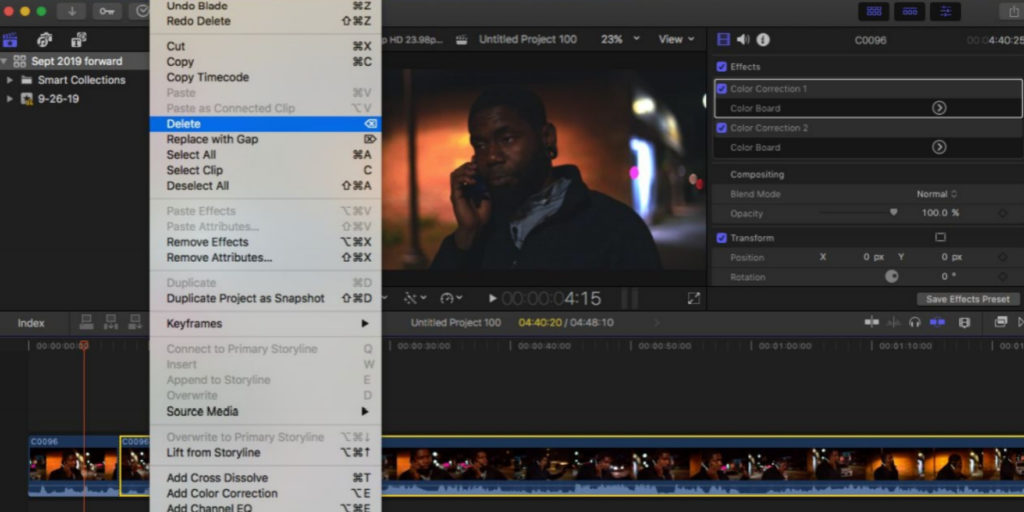
2. Save Export Settings
If a particular setting works for your video, it’s recommended that you keep that preset saved for convenience. Presets can be applied to maintain consistency. Under the File and subsequent Share tabs, you will find the Add Destination option.
- Construct your output preset by selecting the Add Destination tab in the File menu.
- Add Destination will present several options.
- While you can export directly to YouTube, Vimeo, and Facebook, the safest option for your export is to select the Export File.
- You will be able to save this method by double-clicking it while the menu is open.
- Name the Export method to differentiate it from the others.
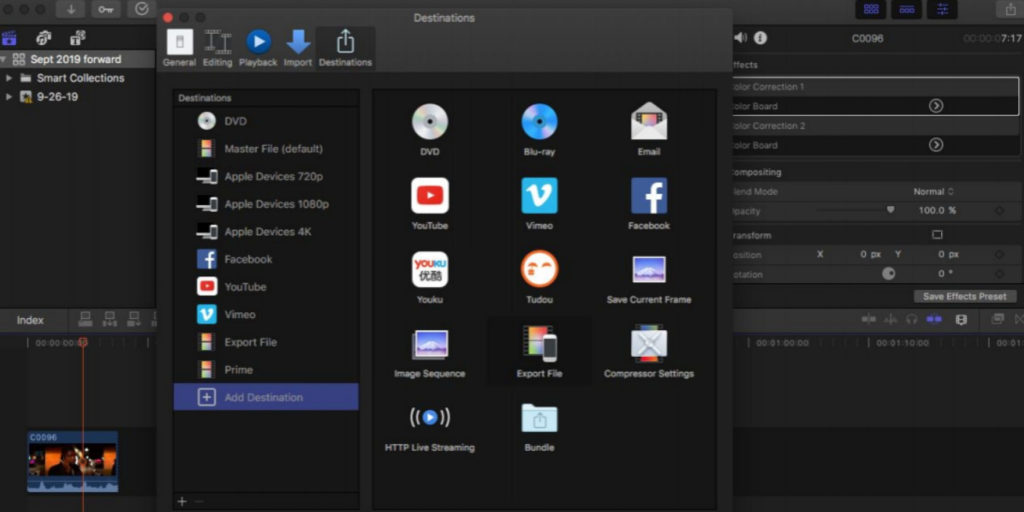
3. Cut Down on Slow Export Times
Render times can be a hassle, especially for longer projects. Below you’ll be given options for cutting back on the wait time that comes with exporting video from Final Cut Pro.
Resizing Dimensions
The larger the dimensions of your video, the longer you’ll likely have to wait for the output file to render. If you are willing to compromise visual quality with a lesser wait time as the video builds itself in Final Cut Pro, you may want to consider settling for a lower resolution video.
- If your video is 4K, you may want to consider exporting video from Final Cut Pro with a 1920 x 1080 output.
- If your video is 1080p, you may want to consider exporting video from Final Cut Pro with a 1280 x 720 output.
Checking the Progress of Your Render
- To monitor the progression of your render, simply select Command + 9.
- The Background Tasks toolbar will appear and show the percentage of your video completed.
Things to Finish Before Exporting
- It’s recommended that all plugins used with clips in Final Cut Pro be rendered out respectively in their own project files to avoid slowing of the process.
- In-software functions such as Stabilization, Ken Burns effect cropping, and audio denoising are to be done before rendering an output file.
Final Cut Pro is one of the more user-friendly editing softwares available. Although some of its functions may seem a bit confusing at first, they can be quite simple to master. We hope this tutorial has helped you learn how to export video from Final Cut Pro with ease! You’ll be able to offer yourself a variety of video outputs to meet your needs as both a video editor and someone operating on a deadline.





















